- Popular Post

AjarnNorth
-
Posts
510 -
Joined
-
Last visited
Content Type
Profiles
Forums
Downloads
Posts posted by AjarnNorth
-
-
- Popular Post
- Popular Post
First Ashy Drongo yesterday, October 1, on top of my TV antenna which I leave up just for birds. Don't even own a TV and even if I did I certainly wouldn't need an antenna. Just reading now in P. Round's "Birds of BKK Area" earliest record for this region is 3 October. Should have snapped a pic, but it was dusk so the light was terrible. But unmistakable by sight and call.
Had just returned from taking the long way home from work to check on a few wader locations. First Bar-tailed Godwit among a group of about 100 mixed waders - PGPs, Greenshank, Redshanks, BW Stilt. Could have been something else in there but just too far off to be positive and my 8 x 35s have seen better days. Need to replace them and get some 10 x 50s. And maybe even a "real" camera one day.
-
 4
4
-
- Popular Post
- Popular Post
15 minutes ago, Goldieinkathu said:No , it's always alone. It's not nervous of me until I get a couple of feet away from it then it flies off.
Looks like someone lost their "Pure White Zebra Finch." https://www.google.com/search?q=white+finch&espv=2&biw=1366&bih=644&tbm=isch&imgil=qYRBT5NEi7vxNM%3A%3Budz3sCtOEix2DM%3Bhttp%253A%252F%252Fwww.animalspot.net%252Fzebra-finch.html&source=iu&pf=m&fir=qYRBT5NEi7vxNM%3A%2Cudz3sCtOEix2DM%2C_&usg=__n5OfVmFJIrSIPLECTzxOV6IItJY%3D&ved=0ahUKEwi8uqfyzqrPAhVMuo8KHZUDAPIQyjcIKQ&ei=C9DnV_yIOMz0vgSVh4CQDw#imgrc=UnBqhumkW5-LzM%3A
-
 3
3
-
First AB Flycatcher of the year from the garden this morning, though I have been busy the last week so it may have been around a couple days already. No Ashy Drongo yet. Hoping to check on some waders this evening.
-
 1
1
-
-
10 hours ago, tahaan said:
A question for the resident experts.
I've just seen a very large raptor passing high over my garden soaring/gliding eastwards towards Chumphae. I was able to grab binos and follow it for a minute or so. It seemed a uniform black with very distinctive widespread 'fingers.' Looking through Robson and the iPad it looks like it may have been a Black Eagle. Is this likely in a semi urban area. Are they migratory. I'm on the Khon Kean/Chaiyaphum border not far from Phukeow/Nam Nao parks as the crow, err, eagle flies.
Absolutely possible, but not enough info to make a definitive call. Tail? Length and shape? Lighting conditions? Time of day? If the sun is high, and the bird.are back-lit ten t, many raptors appear a uniform black. All things considered, could have been any number of specis
-
 1
1
-
-
8 hours ago, Skeptic7 said:
would have to agree with AN and IB...Iora, but which one? the plumage is funky to say the least. the bird is puffed up and Ioras have white under-feathers, sometimes giving them a white-rumped appearance. granted this white appears to extend up the entire back! could be a juvey plumage thing or molt, but that is one funky wingbar! the bird definitely shows faint spectacles. my best would call it a funky-plumaged female Green Iora, but best to wait for the knowledge and expertise of AN and IB.
I've got limited time this week, but just did some reading and some i-net comparisons and I have this bird as male common Iora betwen fledgling and juvenile status. prepared to be wrong, but that's my call.
-
 1
1
-
-
Maybe one of the Iora species, but I have no books and am in a rush and no books to hand. Where do you live? Province?
-
- Popular Post
- Popular Post
Yesterday I drove to Khlong Tamru, an area at the west end of Chonburi about 25 minutes from my place. It's a location where Spoon-billed Sandpipers have been known to touch down in the past, and while I know they won't be anywhere in Thailand for some time yet I thought I'd start familiarizing myself with the area so I can spend some time there this "winter" and see what there is to see... As it turned out, pretty amazing area. Attached here is some of what I saw... Temminck's Stint was a first for me, unless someone can tell me that's not a Temminck's behind the Long-Toed.. IB, we saw Long-Toed together some years ago in Surin. Also a lot of P. Stork. Spot-billled Pelican, Whimbrel, Greenshank, Redshank, LR Plovers, and etc. I will try and get out there every two weeks or so through winter this year. It's an area that promises to turn up something interesting but it's big enough that it will take some time to get to know...
-
 5
5
-
A key wintering site for Critically Endangered Spoon-billed Sandpipers in the Bay of Bangkok is currently being filled in to make way for a solar farm. (Click link for more info...)
https://www.birdguides.com/webzine/article.asp?a=5828
-
28 minutes ago, Bredbury Blue said:
Just heard a very strange noise in the garden I'd not heard before. I thought it was a duck call which would have been unusual. Saw a cat on my garden wall so assumed the cat had grabbed some type of bird. The cat scarpered but the noise continued. Turned out it was a squirrel 'barking' or distress call. It made the sound repeatedly every few seconds for about 2 minutes while moving through the trees. Success, it was calling another squirrel. They met and the noise stopped. Tried to find the noise on youtube. The closest to it was the gruff barking noise in this video
https://youtu.be/eSv2JooWa-4Yes, there are a few strange sounding squirrels about. One sounds to me like someone trying to kickstart a motorcycle that won't turn over. The first time i heard it, in Surin many years ago, I spent nearly 30 minutes trying to locate it thinking I had surely come across a new bird! I eventually tracked it to the squirrel.
-
- Popular Post
- Popular Post
Bird of the day, Eurasian Thick-knee. At the same fishponds referenced above. Shows up in the exact same spot between late August and early September every year for the last four years running. Great looking bird. Usually among a group of Pacific Golden Plovers, but today alone. Skulking and easily flushes, so these pics taken at long distance from the other side of the fish pond.
-
 6
6
-
Not in my yard, but just a couple k down the road where I go to look at waders here in Bangsaen, Chonburi. Ruddy Turnstone (next to a Lesser Sand-Plover). Only the second Turnstone I have seen. Robson Guide has them as "Quite strictly coastal," but the first one I saw and photographed was in Surin! Surin is about 400 kilometers from the nearest coast.
-
 2
2
-
-
- Popular Post
- Popular Post
Getting birdy around here. Not from my yard, but again about two k down the road in an area of inland mangroves and fish ponds that i visit regularly but haven't been to in a couple weeks. Pacific Golden Plovers (early arrival winter visitors). Awful pics (attached) due to fading light but stunning birds, especially at this time of year when some are still nearly in breeding plumage. As far as other winter visitors: about a dozen Greenshank (in flight), one Spotted Redshank, three little Ringed Plover.
Other notables: resident White-browed Crake with fledglings (photo attached). I have seen WBC here many times but can't remember ever getting pics of fledglings.
Most exciting for me was a pair of Alexandrine Parakeet in flight (no pics). When I first moved to this part of Chonburi from Isaan five years ago, I used to see this species fairly regularly from my yard feeding on my neighbors Star Fruit tree, then suddenly they disappeared. We have Rose-breasted Parakeet near daily here, but I haven't seen Alexandrine in almost 3 years so today's sighting was welcome.
Anybody else seeing early arrival winter visitors yet?
-
 4
4
-
Shamimoto: Reticulated Python
I see them often in Bangsaen, Chonburi. I have removed half a dozen from my property and relocated them, and lost two cats to them thus far. A friend was in Kao Yai doing research a few weeks ago and saw (and photographed) a 5 meter reticulated kill a full grown adult barking deer.
-
- Popular Post
- Popular Post
White-throated Kingfisher.
-
 6
6
-
Not in my yard, but just a few clicks down the road... about a dozen Common Redshank and 100 or so Lesser Sand Plovers. Winter visitors arriving... and thus the fun begins...
-
 2
2
-
-
7 minutes ago, PETERTHEEATER said:
There are two nest forms. One with a tubular extension extending from the bottom, The female builds a nest in this and the shape deters intruders such as tree snakes. The other type as no tube but is open at the bottom with a woven lateral footrest one which the male bird roosts.
Actually the males do nearly all the building. The nests are not completed until a female has selected the male as a mate and then the male completes the nest, adding the tube. So those without tubes are still "under construction" so to speak. See "Birds of Bangkok" by Philip Round for a more detailed explanation.
-
They are, as Isanbirder has pointed out already, Baya Weaver nests.
-
Love those myna birds. Currently got a pair trying to build a nest in my xpelair outlet.
Well those mynas built the nest in the xpelair outlet. The outlet flap has 3 plastic pieces, the bottom had been broken off, so they got in. We rarely use the xpelair extractor, the outlet is not easily accessible so good place for a nest. They definitely had chick (s) as during daylight hours they were so noisy. Parents constantly coming and going. Put out more myna food than I usually do. Then last week silence and no activity. Wife reckons a tuukae had the chicks, I prefer to think they flew away.
Snakes and Monitors are the usual culprits. Had my garden Myna nest raided last week by a young monitor.
-
- Popular Post
- Popular Post
Bird ID suggestions please.
Only saw briefly. Quick look and 1 photo....sorry!
Chestnut back, black slightly curved beak and yellow legs. Bigger than Prinia similar size to Fantail. May have white supercillium.
I reckon its a new patch dweller whatever!
Thanks for looking
Yellow-eyed Babbler is my guess. Never seen one... but pretty sure...
-
 4
4
-
I saw a couple of colourful birds yesterday - similar to the Hoopoe, but without the head crest - and they had long wading-bird type legs.
Any ideas?
Not enough info, dick. Where did you see the bird? Province? You say similar to Hoopoe? How? In coloration? Size? Shape of bill? All of the above?
Long wading-bird type legs? Was the bird wading? If so, was it in coastal waters? Inland mangroves? Freshwater pond or reservoir? Near or far from the coast? Was it wading out in the open or skulking along the edge near bush?
Could be some kind of rail or crake or lapwing or pond-heron, but with the scant information pretty impossible to guess.
-
For those unfamiliar with the term "jizz," here's a link: https://en.wikipedia.org/wiki/Jizz_(birding)
And it should be noted that Isanbirder taught me tons about birding in my fist couple years when I made some miscalls which now seem hilarious to me. He also introduced me to the term "jizz"...as well as ID'd Collared Scops Owl for me by call while staying at my place in Surin one night, a call I was previously unfamiliar with but notice always now, as well as spotting the first Common Coot from my terrace overlooking Huai Saneng reservoir, Surin.
When you can look at a small silhouette from a 100 yards away and know beyond doubt what it is, that's jizz. When you flush a snipe and can tell by how and how far it flies whether it's a pintail or a common, that's also jizz.
When it comes to accipiters, oh boy, big problems. But like I said, all my senses told me right away "not Shikra" and the reasons were size, color, the fact that it was well in the the forest and covered whereas usually my Shikras like to perch high and in plain sight, and etc. And i wouldn't have ID's as such back then without significant reading and resarch and reviewing the same reading and research today still feel it's a J Sph. But accipiters are some of the hardest to differentiate so I am perfectly ready to be wrong, but if I am wrong I need some reasons why.
I've only seen Japanese Sparrowhawks once, a small party right out in the open in the middle of a rice paddy. My reaction to the picture was to go for default. In addition, this bird has a mesial throat stripe, which Round says is faint or absent in Jap SH.
I would suggest that the mesial throat stripe in this pic is faint - this is a close range photo and still rather faint - and also note that Robson adds that in the case of female J. Sparrowhawk (in comparison to male) "more prominent mesial streak and more obviously barred underparts."
-
For those unfamiliar with the term "jizz," here's a link: https://en.wikipedia.org/wiki/Jizz_(birding)
And it should be noted that Isanbirder taught me tons about birding in my fist couple years when I made some miscalls which now seem hilarious to me. He also introduced me to the term "jizz"...as well as ID'd Collared Scops Owl for me by call while staying at my place in Surin one night, a call I was previously unfamiliar with but notice always now, as well as spotting the first Common Coot from my terrace overlooking Huai Saneng reservoir, Surin.
When you can look at a small silhouette from a 100 yards away and know beyond doubt what it is, that's jizz. When you flush a snipe and can tell by how and how far it flies whether it's a pintail or a common, that's also jizz.
When it comes to accipiters, oh boy, big problems. But like I said, all my senses told me right away "not Shikra" and the reasons were size, color, the fact that it was well in the the forest and covered whereas usually my Shikras like to perch high and in plain sight, and etc. And i wouldn't have ID's as such back then without significant reading and resarch and reviewing the same reading and research today still feel it's a J Sph. But accipiters are some of the hardest to differentiate so I am perfectly ready to be wrong, but if I am wrong I need some reasons why.
-
 1
1
-
-
Ooops. Should also note that the bird in question was seen in late March and Round's big book on Central Thailand notes that J. Sparrowhawk often outnumbers Shikra in the area from during Spring and autumn migration and this bird was seen in late March, fight in the middle of Autumn migration for J. Sparrowhawk. But really it's the narrow dark brown barring that I think pegs it.
-
 1
1
-
-
Forgot to include this in my yard list - from about two years ago - I have it as Japanese Sparrowhawk but am willing to hear dissent on that. I have Shikra near daily and know full well that Shikra is the default accipiter whenin doubt, but i was fairly certain on this and now have to read again to remember why. Anybody? If i have it right, that would be 87 for the yard list.
From that view, I would have to say Shikra.
I see Shikra nearly every day at very close range and have dozens and dozens of pics of them... on my TV antenna, on trees next to my house, even have photos of a Juv trying desperately to get into a "cruelty free" rat trap (with a live rat in it) on a table in my neighbor's yard. The minute I saw this bird my mind said "not Shikra." First reason - "Jizz." Second, it was perched far closer to the ground than I ever see Shikra. I will try and dig up any other photos I may have of it, but for starters... Shikra, as per Round and all sightings I have, "densely-barred pale rufous" with females "underparts with broader cinnamon-brown barring." This bird has very narrow bars and they were/are dark brown. Also on J. Saprrowhawk, Round notes that females (this is clearly a female accipiter) "Entire underparts whitish, narrowly barred dark brown." Also notes that J. Sparrowhawk "In all plumages, from Besra by mesial throat stripe either faint or lacking." This is a very close range shot and still mesial stripe still very faint. My Robson is at work so I will check that later, but I do not think this is a Shikra.
.png.3b3332cc2256ad0edbc2fe9404feeef0.png)



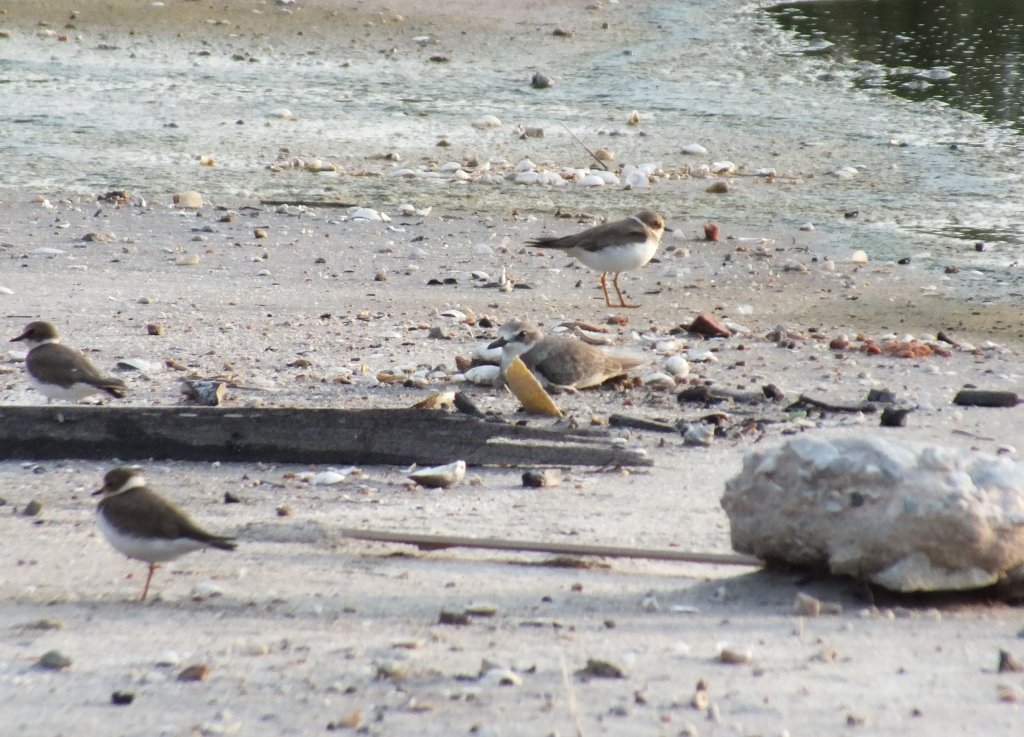




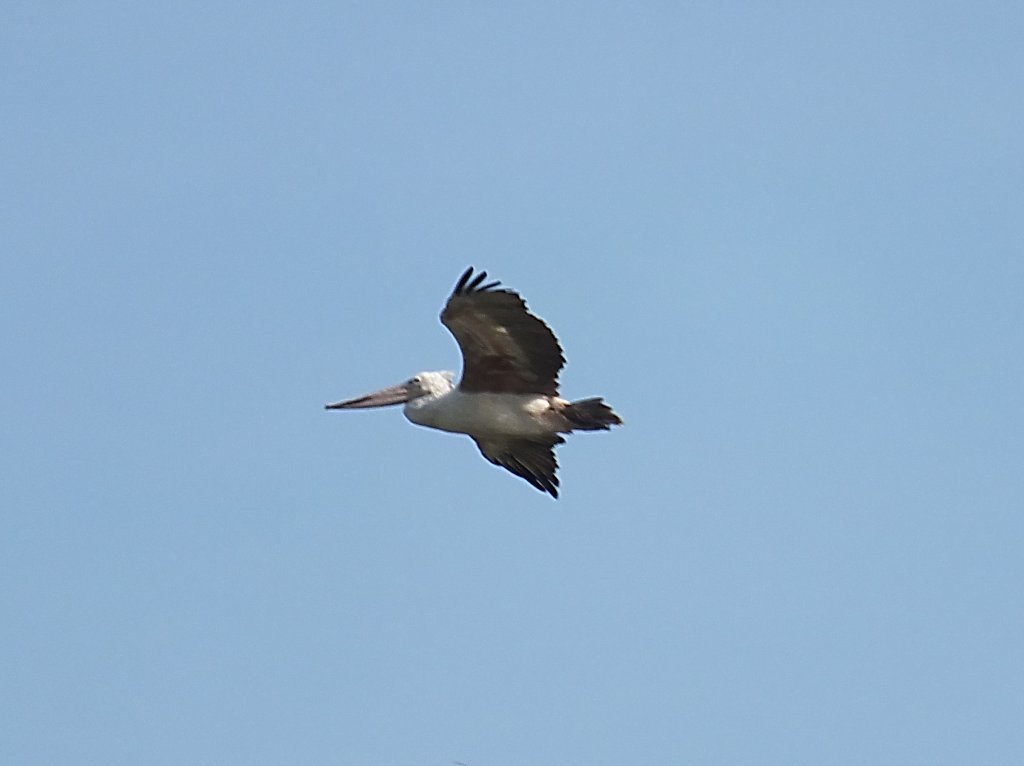


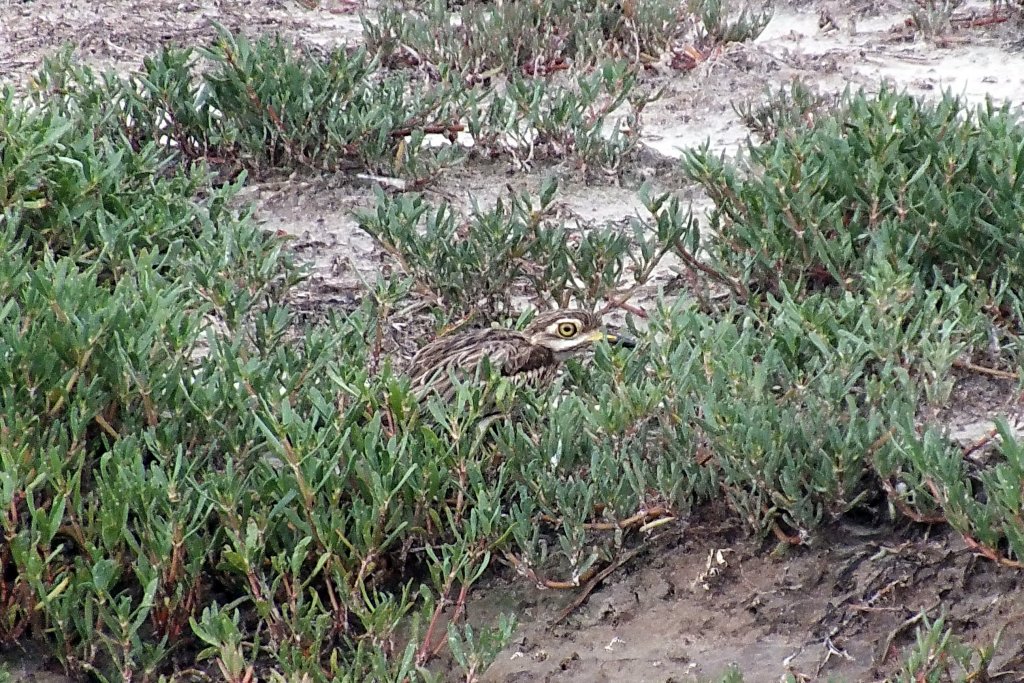

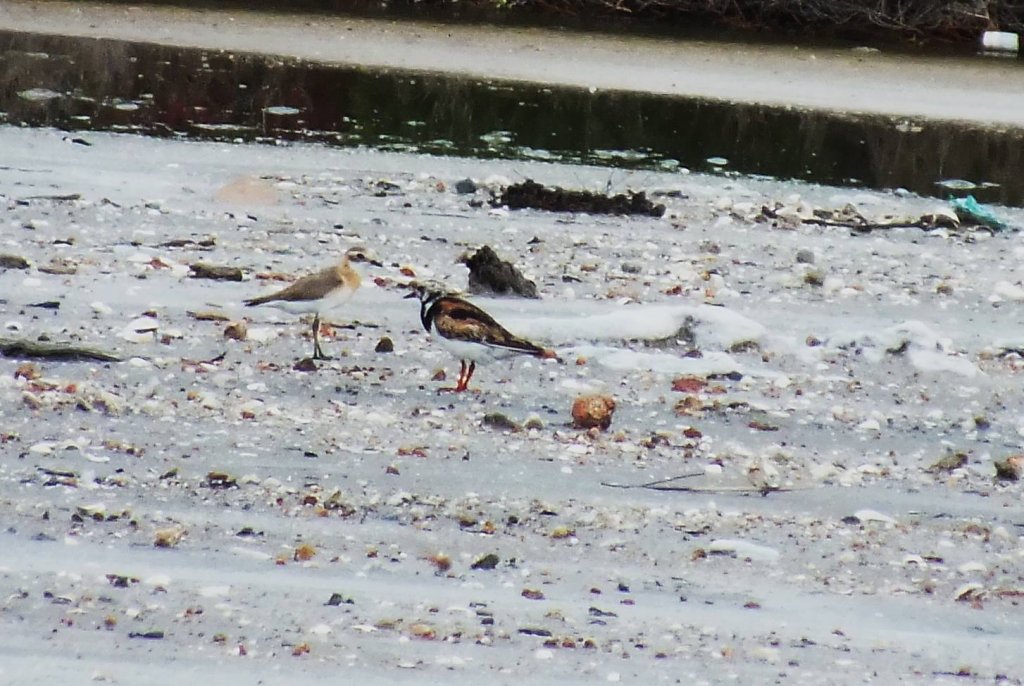
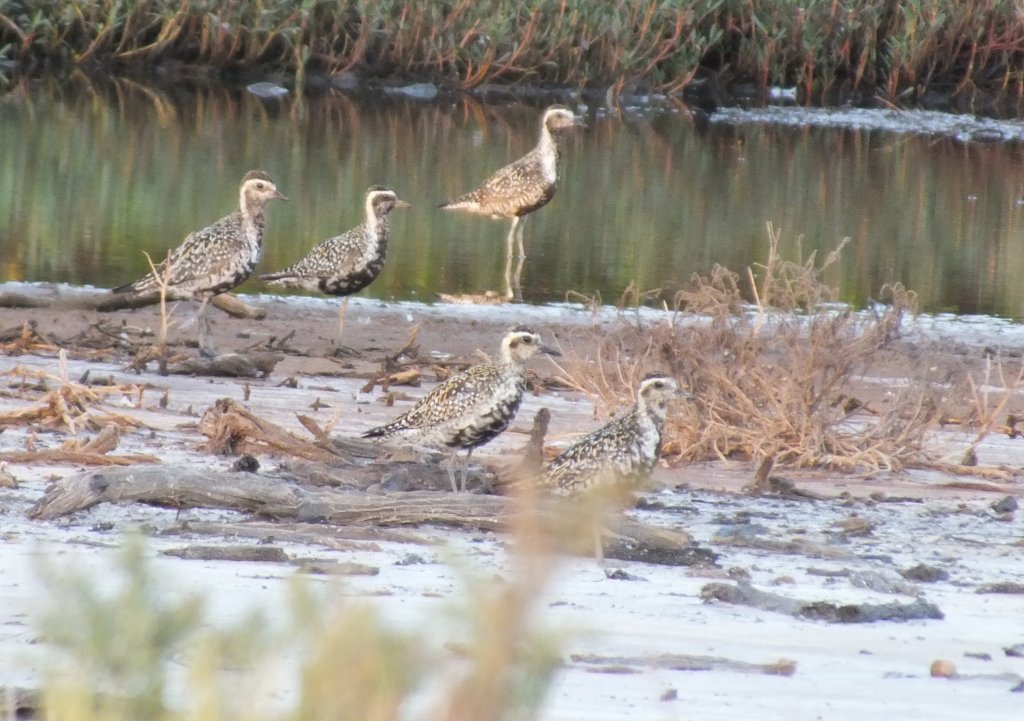
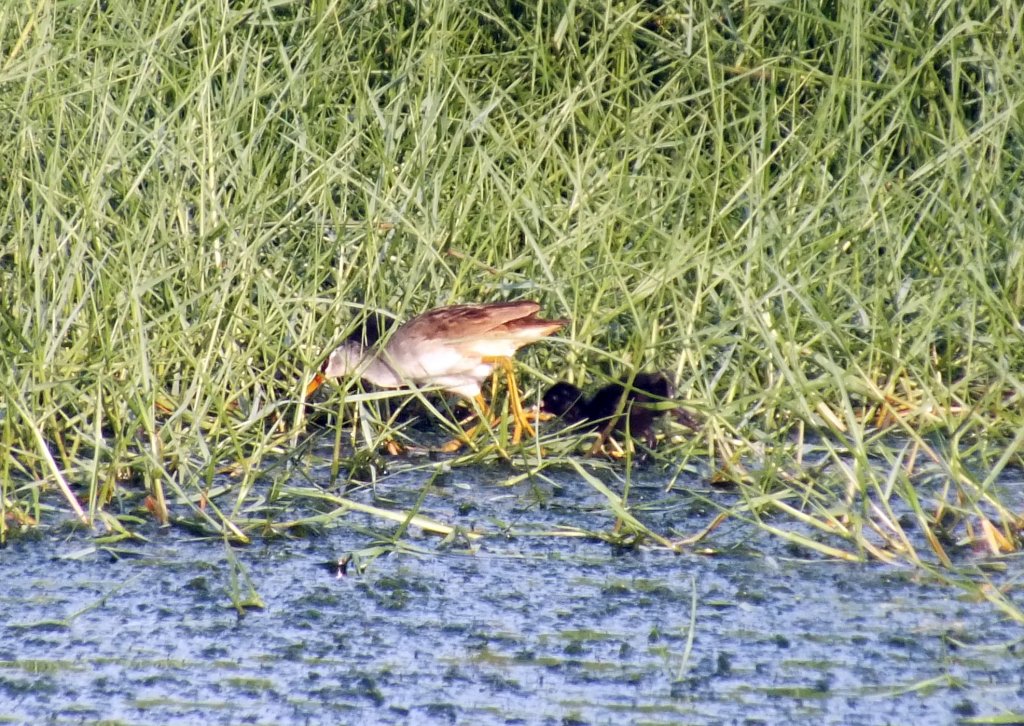
Birds in your garden
in Plants, Pets & Vets in Thailand
Posted
Yes, well, it is very possible that since 2008 there have been earlier reported arrivals in this area. But wishing I had taken a photo last night, I set out this morning to get one and had two quick sightings but no photo in over an hour of walking up and down my soi. Finally gave up and was having breakfast outside, then the bird showed up, again right on my antenna. Not great shots, but photo records nonetheless. Again, very possible that earlier records have been reported from this area since 2008, but Sight record of 1 October and these photos of 2 October have already been submitted to the proper authorities, or authority, I should day. And then an epic snake capture! A harmless Golden Tree Snake (caught my 8th Reticulated Python in the yard last week, and have also gotten Monocled Cobras and etc.), but at the same moment I snared it, it got hold of a Tokay and an epic battle ensued. It looked good for the Tokay for a while, because I didn't think that little snake could take it in... I was wrong. But that's for another thread i suppose after I have reviewd the pics and video.
Attached here the photo records of the Ashy leucogenis today, 2 October 2016, and one Juv. Brown Shrike. Now I will have to go back and see if I have any earlier records of Ashy form years previous here or in Surin. Don't think so - my Surin records are thorough, but I've been keeping terrible records here in Chonburi over the years. Need to do a better job of that.